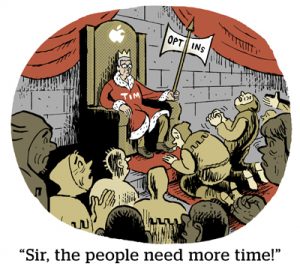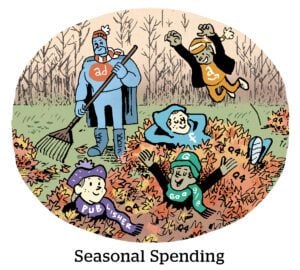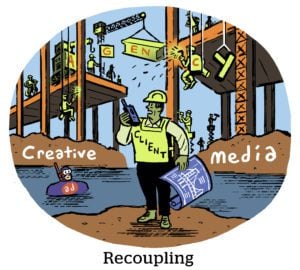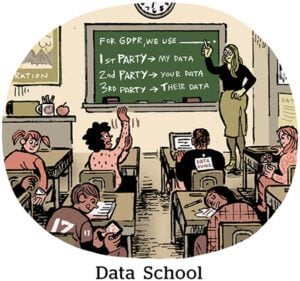Influencer marketing spending is poised to reach $7B in 2024, nearly tripling since 2019.
Brands trying to cut through an increasingly noisy, saturated digital environment are finding growth gains by using the social media content of third-party personalities to promote their products or services.
But, of course, mistakes happen as brands rush into the space. Here are four common errors that can curtail the success of any influencer campaign – and advice for getting it right.
1. Choosing the wrong influencer
The splashiest influencers carry a ton of clout – but they aren’t always the best choice. The most effective influencers aren’t the ones with the biggest audience. Rather, they’re the ones with the audience that best aligns with your brand, product and/or service.
A micro-influencer with a tightly aligned following in the thousands could be a better fit than a mega-influencer whose only goal is to chase cash and hawk any product under the sun.
To get a shortlist going, look for influencers and creators whose content connects naturally to what you’re selling. For example, a brand selling sustainable jewelry might seek influencers passionate about protecting the environment.
The benefits of a well-chosen influencer – connecting with a new and highly relevant audience and building brand awareness with authenticity – are powerful. Just as important, being thoughtful and intentional about your choice of influencers helps mitigate the risk of potential negative impacts from a poor fit.
2. Choosing the wrong channels
Influencer marketing isn’t immune to higher-ups with an itch to explore trendy channels like TikTok.
But “We should advertise on [insert channel here]” is a misinformed directive. The hottest, latest channel may not be the right space for your brand, no matter how popular it is.
Influencer marketing can work on just about any channel, as long as there’s a fit between campaign goals, channel audience and influencer preference. A YouTube star sharing high-end home-improvement recommendations in 15-minute increments, for instance, might not be the best fit for TikTok’s younger-skewing, short-form-loving format.
3. Setting the wrong goals
This usually takes one of two forms: setting no KPI goals at all or trying to tackle more than one KPI per campaign.
Influencers can generally be effective at driving either brand awareness or revenue.
If you’re leaning toward the former, track metrics like reach, engagement and lift in your brand’s social media following and brand search over the length of the influencer campaign.
If you’re aiming to grow revenue, you’ll need to custom-create affiliate links for each influencer campaign and track performance (clicks, conversions, etc.) in your back-end analytics, which are provided by affiliate and influencer network platforms (e.g., Impact and ShareASale).
For revenue generation, specifically, remember that last-click attribution won’t fully track the true impact of influencer campaigns, since most users need to see the brand/product/service more than once before purchasing. You should be tracking this set of metrics for a long time period – up to a year – to get an accurate reading of campaign performance.
4. Setting the wrong expectations
Inconsistency between internal expectations and the expectations of influencer partners can lead to trouble.
On the internal side, be clear about KPIs and communicate them with all teams that may be affected downstream.
If your influencer campaign’s main goal is to drive brand awareness, make sure whoever is in charge of your paid search campaigns knows to keep an eye out for an increase in brand or product interest and that they can budget accordingly. If your goal is a boost in direct-response sales (maybe you’ve given the influencer a discount code to offer), make sure you’ve got the inventory to fulfill any jump in purchase activity.
On the external side, communicate your priorities to your influencer partners – e.g., features you’d like to promote, specific audiences you’d like to appeal to, brand attributes to highlight. Establish a clear understanding of what the influencer is expected to deliver (e.g., a specific number of posts, preferred timing, etc.) and how they’ll be compensated.
Remember: The majority of influencers require monetary compensation on top of product gifting. Ensure the budget is available to secure the right creators for your campaign.
Starting fresh
Done right, influencer marketing can be a huge asset in a brand’s marketing portfolio. It can forge rich connections with relevant new audiences.
Whether you’ve tried influencer campaigns before without success or want to explore every possible avenue for growth in 2024, make sure to avoid these common pitfalls.
“On TV & Video” is a column exploring opportunities and challenges in advanced TV and video.
Follow DMi Partners and AdExchanger on LinkedIn.

















